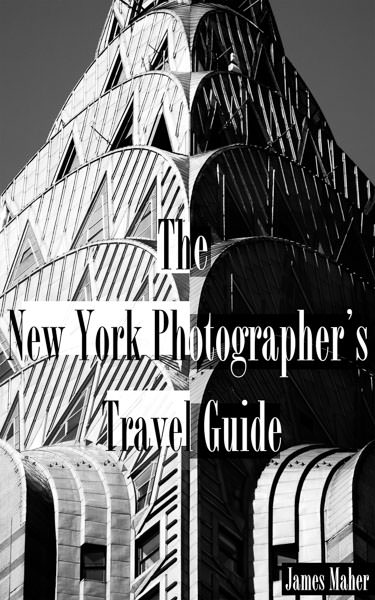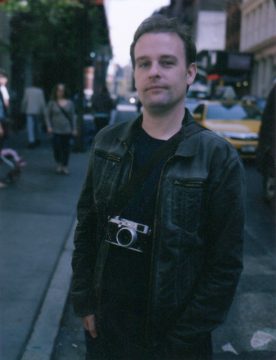The New York Photographer’s Travel Guide
The Best Places to Photograph from a Professional Photographer, Tour Guide, and Lifelong New Yorker
Photograph the Most Exciting that New York has to offer
Love exploring the city?
Want to know where to go to photograph the best that New York City has to offer, including both the lesser-known, off-the-beaten-path locations and the grand iconic architecture? Want to learn where the best people-watching in the city is?
This detailed guide will help you return with extraordinary photos that capture the real New York.
What’s Included:
- The best locations to photograph iconic buildings and landmarks
- The best off-the-beaten-path locations
- The best locations for photographing people
- Street / people photography tips, tricks, and techniques
- Night photography
- Neighborhood and architectural history
- General tips and safety
- Google Map included

Written by James Maher, a professional street and architecture photographer, a certified NYC tour guide, a photography educator, and a lifelong New Yorker, this New York Photography guide will cover the most exciting locations to explore and capture New York. Included is a link to a Google Map that has every location mentioned in the book, so you can put it on your phone and always know where to go. Also included are 85 photographs to illustrate the locations.
This book is not just about the buildings. It will show you where and how to capture incredible photographs of New Yorkers, as they are what make the city great, and it will tell you the busiest and most interesting street corners in the city. It will teach you about the history of the areas you are photographing because the more knowledgeable you are about New York, the better photographs you can take.
And finally, will learn about planning and equipment, general tips and safety, night photography locations and tips, and street photo tips.
New York Photography Location Map
Reviews:
“As a native born New Yorker and a lifetime photographer I can tell you that this is the quintessential book for any photographer living or visiting NYC. As I was reading it I was muttering “No James, don’t give that place away!” but then I would find a place did I not know about. James gives locations, directions, best times of day, recommend camera settings and options for long or shorter walks. I no longer have to give recommendations to visiting photographers, I can just point them at this book. A terrific resource written by someone who’s love NYC come through on every page.”
– John Dillworth
“The New York Photographer’s Travel Guide is like sitting down with a good friend while he tells you all his secrets about photographing NYC. From exact locations, to walking routes and tips, to seasonal and time of day/lighting suggestions, to safety precautions…this is well written, insightful, inspirational and most of all, motivational. Again, it’s like having a meal with a good friend. This book with ALL my highlighted notes, will be in my back pocket my next trip to the city.”
– Anonymous Review
“Amazing photography of the city I love! As a Native New Yorker Mr. Maher has also given me new tidbits of info of my city that I didn’t know. A treasure of a book in many ways. Highly recommend for anyone visiting NYC or just living here. Thank you for this gift.”
– J. Willard
“This is a beautifully written and photographed homage to the best of one of the world’s most incredible cities. It’s like having your own special guide on hand allowing you to focus on your areas of interest, at your own pace. Tips on when and how to get there, plus suggestions on where to eat are plentiful. But even more important are techniques to improve your street photography. I highly recommend this book, especially to those who live in NYC, or plan to visit.”
– John A. Fleming
“I’m a New Yorker through and through but haven’t quite yet visited all the places in James Maher’s book, and those places I have visited, I did not notice the beautiful parts that James’ photographed. Loved the book from beginning to end because now that I’m retired and photographing as a hobby, I plan to visit and revisit every place that James’ photographed and recommends. His pictures are exciting and make me proud to be a New Yorker. Highly recommend the book to both visitors and New Yorkers.”
– Pearl Feder
About James: James is a lifelong New Yorker, and like many Manhattanites, he is a terrible driver and cook; however, he is an excellent navigator and knows where to find the best Chinese takeout. James has devoted himself to his photography business in New York since 2005. His fine-art photography has been sold and licensed to collectors and companies globally, including Tiffany & Co. and G-Star RAW, he works with various businesses as a portrait and studio photographer in New York, he is a regular contributor (both photographic and written work) to a variety of websites and magazines, and as a certified New York tour and workshop guide, he frequently leads photography workshops. He has also had a multi-year regular feature for the NY Daily News reporting on different neighborhoods of the city through street portraits and interviews with locals.
James is the author of the Essentials of Street Photography eBook and has also been working on a documentary project since 2012, which consists of nearly 150 portraits and in-depth interviews primarily with long-time residents, business owners, and employees in the East Village neighborhood of New York City. The project has become a historical account of the mid-to-late 20th Century of one of the most vibrant and lively neighborhoods in the city.
The New York Photographer’s Travel Guide (non-PDF version)
Part 1: Preparing For Your Trip
Chapter 1: Introduction
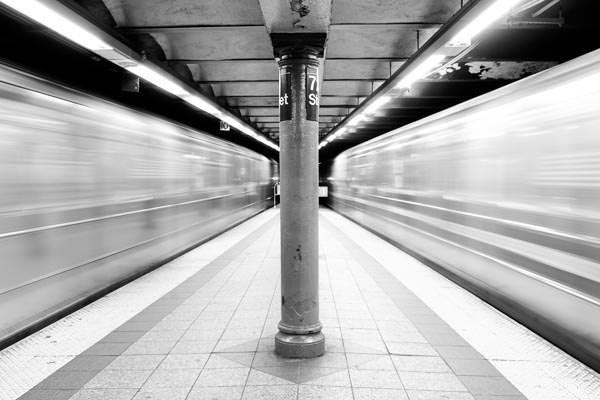
New York is a photographer’s city. No matter what your interests, there is something here for you to capture, whether it is the sprawling cityscapes, the old sublime architecture, the futuristic steel and glass towers, the natural beauty of Central Park, or the people and fashions on the street.
Millions of tourists flock to New York each year to capture the grand city – 59.7 million in 2015 to be exact. Because of this, it can somehow seem incredibly hard to capture a unique photograph of the city, that is until you turn the corner one day and come across that spectacular moment; then it can seem incredibly easy.
I grew up in New York and have seen it change significantly. I have built up a large archive over the years, exploring in the rain, the snow, in the brutal heat of summer, and at the late hours of the night. I used to always love to wander the city, and as I got older, the camera became a reason to do it. If I just wandered out of the apartment one night at 11pm to explore, my wife would think I was going crazy. With a camera, walking around at 11pm seems more normal to her and others. I may still be crazy, but at least other people seem to understand it a little better when you have a camera around your neck.
Photography has brought me up to a $20 million dollar penthouse apartment on Park Avenue and down to the abandoned FDR train under Grant Central Terminal. It has acted as a key to meet all types of people and achieve all types of unique experiences around New York that I otherwise might not have bothered with. It fed my love for the history of New York and led me to become a certified New York tour guide. For the last six years, I have lead photography workshops around New York, where I mix an education of both photography and the history of the city. I feel that both go hand in hand, because you can take a better photograph of New York if you understand both its history and its current happenings. The next time you come to New York, please look me up and I would love to show you around.
This book will explore all of my favorite places to photograph in the city and give you advice about how to photograph here. This is most of what I know. I did not aim to cover every single potential photographic opportunity in New York. I wanted this book to be focused on what I know best, and I wanted it to be able to be read and understood in its entirety on a plane ride. While I’m sure there are many spectacular locations for photography that I have not yet found and never will find, as the city is immense, this is an exhaustive list based on a decade and a half of researching and exploring.
All this being said, save some time to wander and get lost. Veer away from the map occasionally. Sometimes this is when the
best photographs appear. I hope you have a wonderful time photographing here, and I hope this book makes you even more excited to photograph New York.
Chapter 2: Planning and Equipment
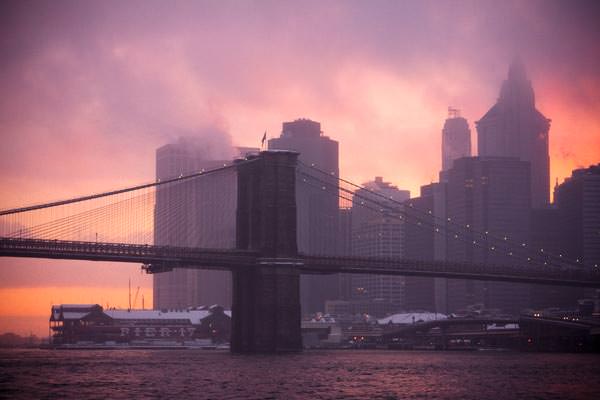
Each season in New York is unique. In springtime, the city comes alive, people put on their most colorful outfits, and the weather is gorgeous, if not occasionally rainy. In summer, the city heats up like a furnace, the sun bakes down on the streets, and the New Yorkers with the means to do so flock to cooler areas (don’t let this deter you, it is still a great season for photography). In the fall, the weather becomes perfect again, the trees start changing, and everyone returns to the normal grind, but still with enough energy to be out and about. In early winter, the Christmas lights spread out all over the city, the weather is brisk but nice, the occasional snowstorm turns the city into a magical place, hotel prices rise significantly, New Yorkers all switch to their black outfits, and you cannot go anywhere in midtown quickly due to the crowds. In January and

February, the crowds disappear and the city goes quiet due to the brutal cold, but the snowstorms are legendary.
Plan to walk everywhere, but make sure to pace yourself. I know many people who have abused their legs in the first two days and hurt for the rest of the trip. Even going up and down the subway stairs many times a day can add some strain over the course of the week, particularly with a camera and camera bag weighing you down. You should walk as much as you can handle because that’s the way we like it here, but make sure to break it up. Spread out the big walking days as much as possible.
Taxis are easy to flag down wherever you go in New York, but I highly suggest downloading a taxi app like Uber or Lyft for your trip, should you be stuck in an area without taxis or at a time where they all seem full. After a long day of walking, this option could be a lifesaver. It is also good to download a New York transit app on your phone. There are many, but I recommend Citymapper and New York Subway. While it depends on where you are going, the subways are usually the fastest way to get around the city, so plan on using them.

Because of the amount of walking, I highly suggest traveling light with your equipment when coming to the city. It can be tempting to bring along a fisheye lens, a wide zoom, a general zoom, a 70-200mm telephoto lens, multiple filters, and every other gadget under the sun, particularly if this is a once in a lifetime trip. However, this can also ruin your trip. Photographing will quickly get old as the equipment will weigh you down, slow you down, hurt your back, and make photography a lot less fun. Pick your favorite two lenses and go with that, if not just your favorite one. A general zoom, such as a 24-70mm or a 24-105mm will cover pretty much everything you need, and the few shots you will miss from not bringing your other lenses will be made up by the fact that you will be able to walk many more miles. Most of the time, I walk around with a 35mm prime or a 50mm prime and that is it, although I love my 24-70mm.
A tripod will be helpful at night in New York, particularly in darker places like Central Park, but keep in mind that they are not allowed in Times Square or in Grand Central Terminal. You can bring a small beanbag or mini tripod with you, which will work in most places. If your camera can perform well at ISO 1600 or 3200, then you can shoot handheld in many areas of New York at night. We will talk more about this later, but you just need to seek out the light sources, whether it be a lamppost, a store window, or a neon sign.
The city looks the most beautiful in the elements, so if you arrive during a rainy week, that may not be a bad thing. I make a point to go out in big snowstorms and in the rain. It is a magical time to see the city when not many other people are adventuring outdoors.
When shooting in the elements, always be safe. Bad weather can be dangerous, both to you and to your equipment, so use your judgment. I have tried many camera weather enclosures, but I have found nothing that works better than the small pharmacy plastic bags. I will pack my bag with a couple hand towels, four or five plastic bags, gaffers tape, my lens hood, and an umbrella. I will remove the lens hood, poke a hole in the plastic bag, stick my lens through it, use some gaffers tape to keep it on tight, and then attach my lens hood over it. I will still use an umbrella when shooting this way. This is not a perfect solution to keep the water away, so you still have to be very careful to keep your camera from getting wet. In addition, try not to point your lens up to the sky too often as that is when the rain will hit it and you will have to wipe it off. If I have to take a shot pointing up, I will get everything ready first and then raise my camera to take the shot as quickly as possible.
If you are looking for new equipment, B&H Photo Video on 9th Avenue between 33rd and 34th Streets is the place to shop. The block-long store is world-famous and holds every type of toy you could possibly dream of. There is even a conveyor belt system that whisks camera equipment above your head and all over the store. The people who work there are extremely knowledgeable and will treat you right; they are not just trying to make a sale – if they do not think you should buy something, they will tell you. And if you are looking to purchase your equipment before you head to New York, ordering from www.bhphotovideo.com is the way to go.
You cannot go wrong with many camera companies, including Canon, Olympus, Nikon, and Sony; however, I highly suggest you consider Fuji cameras. In my opinion, Fuji is the camera company of the future. Particularly for travel and street photography, large SLRs can be cumbersome. This is where mirrorless cameras come in, and do not let the APS-C sized sensors deter you. The image quality is basically as good as full-frame sensors (the difference is negligible for most uses). Fuji cameras are sturdy, well-built, and the image and color quality are top class. But most importantly, they are the most ergonomic cameras out there. They are the perfect size, beautiful, and are extremely fun to use. In contrast, while Sony makes incredible camera bodies, they cost much more, and their lenses are usually very large, which leads their mirrorless cameras too often have the heft of an SLR.
My two favorite cameras are the revolutionary Fuji X-T and X100 lines. The X-T line allows you to use interchangeable lenses, while the X100 line has a built in 35mm equivalent lens (although there are 50mm and 28mm equivalent attachments). Purchase a tiny travel camera bag such as the ONA Bowery bag and you will be good to go!
You can see all of my recommended camera and equipment on my B&H Gear Essentials page.
Chapter 3: General Tips and Safety
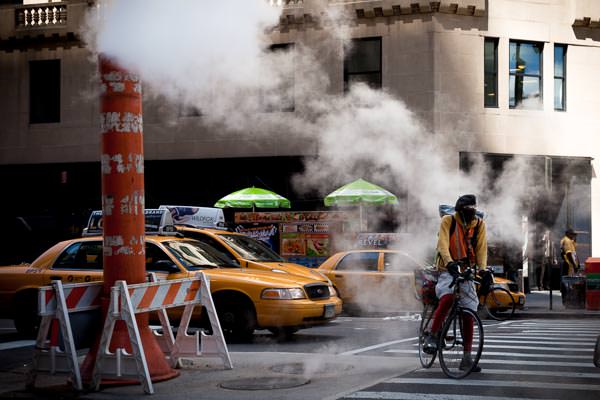
New York is as safe as it has been in a very long time. When people think about the dangerous New York of old, they think about the ‘70s and ‘80s, but the city has come a long way since then. Any place that an out-of-towner would think of going will most likely be very safe.
That being said, New York is a city, and you need to be smart about how you carry yourself, particularly if you have a lot of equipment and look like a tourist. I carry a camera nearly every day, and I have never had an incident nor have I ever been pick- pocketed. This is something that I do not feel like I have to worry about, but I also keep my stuff with me at all times. If I have expensive equipment in a bag when I sit down to lunch, I make sure that the bag is in front of me and under the table, and I will sometimes stick my leg through the strap. I never leave my equipment unattended. I know New York can be an overwhelming place and traveling here can be tiring, but try to keep your awareness.
I photograph frequently at night by myself, but if you decide to do this and you don’t know the city well, you need to be smart about it. It is always a good thing to bring a friend and stay to areas that you know. Manhattan, in general, will be safe to photograph at night. Even Central Park is safe at night, but if you go very late, you will be in a park without many other people around. If you know your way around that can be fine, but I would suggest sticking to sunset and the hour or two afterward when there are still a lot of people around, as opposed to 11pm or midnight. That goes for the rest of the city as well.
But by far the most dangerous aspect of photographing in the city is due to cars and bikes. When people travel, they are often fatigued, jetlagged, over-stimulated, and excited. Throw a camera into the mix and this can be a dangerous situation. Be extra careful about crossing the streets, backing up suddenly into a person or a biker, swinging into someone, or falling off the curb. Always know where the cars and bikes are coming from. When photographers look through the viewfinder and begin to walk around to find the right perspective, they often have no awareness of where they are walking. So make sure to keep your wits about you.
Chapter 4: Night Photography Tips
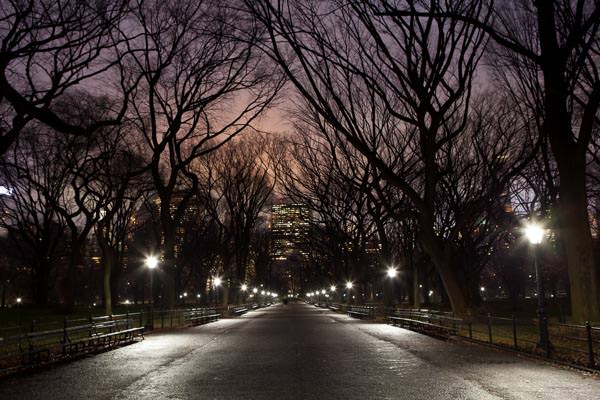
New York is spectacular at night. Scenes that might look normal by day come alive at night. The city sparkles, particularly if it is rainy out. I highly suggest you set aside a night to explore. Look up the sunset time on Google and start photographing 45 minutes before it. The next two hours after the sun sets will be beautiful as the sky turns from red to purple to blue to black and as the glow of the building lights get stronger.
A tripod and shutter release are recommended for night photography, particularly if you are doing urban landscapes, but I also love to shoot handheld at night, so I would consider doing one night with a tripod and one night walking around handheld with your camera at a high ISO. There are so many lights and bright window displays around the city that you just need to seek out the light sources. Find lampposts or window signs and get close to them. Wait until interesting people walk by and use those light sources to illuminate your subjects. This method of photography can create some very moody images, and the colors come alive based on the color temperature of the lights.
Some of my favorite locations to photograph at night are midtown (particularly the 42nd Street stretch), the Manhattan and Brooklyn bridges and the Brooklyn waterfront, Central Park, Top of the Rock, Chinatown, SoHo, and Washington Square Park.
Chapter 5: Street Photography Tips
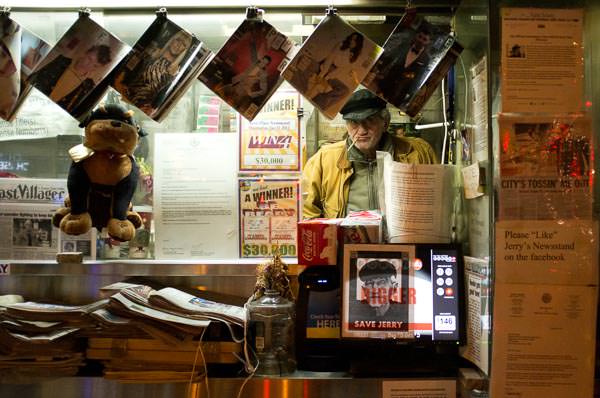
Click here to read a more in-depth street photography guide.
New York is an unparalleled place to learn and practice street photography. If you do not know what street photography is, there are many definitions, but it is basically candid photography of people in public. I know some of you might think that is a little creepy, and it might be, but it is an important art form. Think about the old photographs of New York that you love. How many of them showed people? Most likely it is a lot of them.
This type of photography captures the culture and street life of the city and preserves it. One day it will be historic. Many of the buildings will stay the same, but photographs with people and culture in them will age in such an interesting way.
While some think that it is the skyline and architecture that makes New York what it is, that is not true. The people of New York are even more interesting than the buildings. On the streets, no matter where you are, you can see a melting pot of all types of people going on their daily grind. From hot dog vendors, to recent immigrants, to flâneurs, to Wall Street brokers, to some of the richest people in the world, you can come across anyone standing on a street corner.
In some places around the world, such as France and Germany, street photography is not legal without permission. In more places than not, however, it is legal, but always check the local laws when traveling. Street photography in New York is legal and you can use the photographs for artistic purposes. You can sell prints of them or use them to illustrate the city, but you cannot use them for any advertising or commercial purposes without a model release.
In addition, New York is one of the easiest places in the world to learn street photography. There is so much hustle and bustle that everyone gets lost in the crowd. There are photographers and tourists everywhere, taking photographs of everything. You will be much more invisible out there than you might think, so be confident.

Pick busy street corners to hang out on and people watch. No matter if you are walking around or waiting in place, the same amount of extraordinary people and moments will pass you by. However, if you are standing in place and waiting for them to appear, it will be easier to notice and catch them. If you are nervous about trying street photography, it is even more important to pick your spot in a busy intersection. When you stand on a street corner with your camera ready, your subjects are entering your personal space, instead of you entering their space, so it makes the transaction much easier. Most people will walk by you without giving a thought.
I try whenever possible to not let people know that I have taken their photograph. This is because I want to keep things candid and not have everyone stop me to talk. My biggest tip for not being noticed is to watch out for your camera snap. A camera snap is the moment that you take the camera away from your eye after you take a photo. This is the action that tips people off that you have taken their photograph, and it is something that nearly everyone does. If you stop doing this and keep the camera up to your eye after you have taken a photograph, people will just think that they got in your way and will keep walking through your scene. Similarly, for areas that are not as busy, I will often aim the camera above a person or to the side of them as if I am taking a photograph of a building. Then, at the last second, I will make it look like I am putting my camera down, where I will take a quick photo of them before moving on.
If someone does notice you, be honest. Smile and shake their hand. Tell them that you are doing a project on the people and culture of New York, and you thought they looked fabulous. Flattery works great. Offer to send them the photograph. Apologize if they continue to seem annoyed, offer to delete it, and tell them that you did not mean to make them uncomfortable. If you are in a public place, it is legal, but it is best not to bring this up unless completely necessary. That will just make the subject angry. Also, keep in mind that public places do not include businesses or on private property, although many street photographers do photograph in these situations.
For your camera, the most important setting to pay attention to is your shutter speed. Your shutter speed should be at least 1/250th of a second to freeze the motion in people. If it is dark out, you can go slower, to 1/160th or 1/125th, and in harsh sunlight, you can go higher than 1/250th.
It is also a good idea to raise your ISO. How much depends on your camera. With my professional level camera, I usually shoot at ISO 200-400 in sunlight, ISO 800 in light shade, ISO 1600 in dark shade or at dusk, and ISO 3200 or 6400 at night. The reason for this is that the higher ISOs allow you to use a faster shutter speed to freeze motion in people and also a smaller aperture (a larger numbered aperture, such as F8, F11, or F16) so that more of the scene is sharp and so that you do not screw up the focus on the main subject. At night, no matter what you do, you will usually be stuck using a very large aperture, such as F2.8 or F4.
Many famous street photographers have had their favorite corners. Bill Cunningham of the New York Times Style Section fame and Garry Winogrand, one of the most famous street photographers of all time, spent much of their lives photographing on 5th Avenue. The avenue is wide and lets in a lot of light, and it is one of the busiest stretches of the city. The city even renamed the corner of 57th and 5th after Bill Cunningham, after he passed away in 2016.
My favorite areas for street photography are 5th Avenue in the 50s and 40s, SoHo and particularly the corner of Prince and Broadway, the East Village, the Lower East Side, Chinatown, Coney Island, anywhere in Midtown, Bushwick, Williamsburg, and of course the subway system.
Part 2: Best Photography Locations
Chapter 6: Central Park
Chapter 7: Midtown and 42nd Street
Chapter 8: Two Bridges and Brooklyn Waterfront
Chapter 9: SoHo and Greene Street
Chapter 10: East Village and Lower East Side
Chapter 11: Chinatown, Little Italy, and Nolita
Chapter 12: West Village and Washington Square Park
Chapter 13: City Hall District
Chapter 14: Flatiron District and Madison Square Park
Chapter 15: Subway System
Chapter 16: East River Ferry, Water Taxis, Tour Boats, and Staten Island Ferry
Chapter 17: Financial District, Battery Park, and World Trade Center
Chapter 18: Bushwick and Williamsburg
Chapter 19: Coney Island
Chapter 20: Rooftop bars

